What is a Plant Trial?
The purpose of the trial program conducted at the Annual Flower Trial Garden is to evaluate the performance of different annual plant cultivars under our unique Rocky Mountain environmental conditions. more
Our growing conditions are characterized by high altitude, intense solar radiation, drying winds, severe hailstorms, large fluctuations between day and night temperatures and a season-long need for irrigation. Each year, our annual trial consists of over 1,000 different cultivars of annual bedding plants. Varieties are grouped by genus, arranged by color and grown in rows, side-by-side, so as to facilitate the comparison of similar varieties. In addition to the Annual Trial, we also have a Pansy/Cool-season Crop Overwintering Trial that tests a plant’s ability to overwinter in the Northern Colorado climate, as well as a new two-year Perennial Trial program designed to test newer perennial cultivars that have been introduced in the past three years or less.
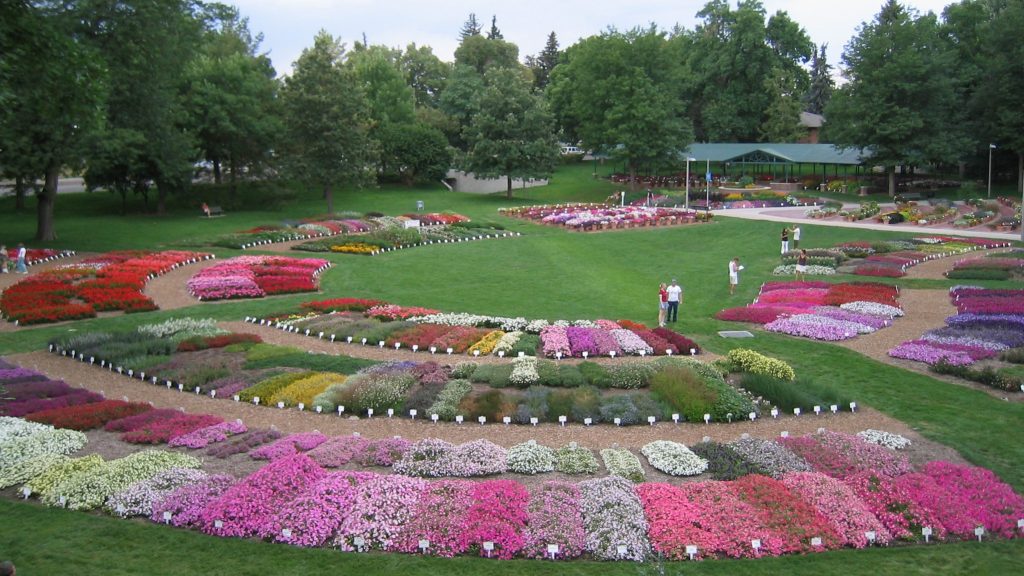


Research
Plants are evaluated for plant vigor, uniformity, floriferousness and tolerance to environmental and biotic stresses. more
The entries in the Annual Trial are judged in early August by select horticulture students, faculty, industry representatives, public horticulturalists and advanced Master Gardeners. In early September our advisory committee, a group of industry professionals, then re-evaluates the top rated entries to ensure they are still of superior quality and selects the winners for that year. Results are published, and are also made available on this web site, at the end of each season.


Funding and Support
Maintenance of the garden and research conducted for the trial program are funded, in most part, by the entry fees collected from the plant companies who submit entries into the trial. (For a list of these companies, and links to their web sites, please click on our “Sponsors” link.)more
Additional financial assistance and supplies for the trial operations are donated by a number of sponsors from within the green industry. These sponsors include various horticulture industry associations, foundations, nurseries and garden centers and greenhouse material suppliers from across the nation. Some operational and staff resources come from the Colorado Agricultural Experiment Station, CSU Extension, the College of Agricultural Sciences and the Department of Horticulture and Landscape Architecture; however, the garden receives no operating dollars directly allocated from state funds.
The Plants
Today, the majority of plants in the Annual Trial—around three quarters of the entries—are propagated from vegetative cuttings, and are often referred to as clones. more
A cutting is piece of plant that is cut off of a mother plant (the mother stock) and “stuck” into a growing medium that encourages the growth and establishment of a new root system. The result is a clone of the mother plant. In the past, the majority of plants were produced from seed.
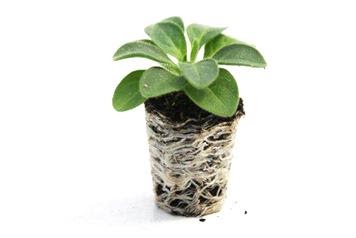
Vegetative cutting rooted into “plug” is the predominate method of propagation of plants in the flower trials. They are transferred to a 4.5” pot and grown in the greenhouse before planting in the trial beds in late May.
There are important differences between seed propagated and vegetatively propagated varieties. For example, certain plants from vegetative cuttings can be more vigorous and produce larger plants than similar seed varieties. An annual is a plant that lives for only one growing season; it completes its lifecycle (grows, flowers, produces seed) in that one season and then dies. A perennial is a single plant that lives two or more growing seasons, which may or may not complete its lifecycle in that first season. You may see plants in our annual trial that are technically perennials. This is because sometimes perennials that are not cold hardy in this climate are still grown and sold in the region, and are considered to be a one-season crop, like annuals. To confuse matters more, some annuals appear to come back every year, just like perennials. In the case of the annual, it is not the same plant that you are seeing the following year, but rather a new plant that germinated from a seed left in the ground by the mother plant the year before. All of the plant cultivars displayed in the garden are protected by plant patents. The breeding process for plants is lengthy, and it can take several years for a new variety to make its way to the local garden center. Plant trials, such as ours, provide important research and feedback that breeders can use in the breeding process.
Cultural Practices
All of the vegetative varieties are grown in the university’s greenhouses. They are received in early spring as plugs and transplanted into 4” pots. While growing in the greenhouses, plants are “ferti-irrigated” and pinched, as necessary, to maintain desirable growth habits.more
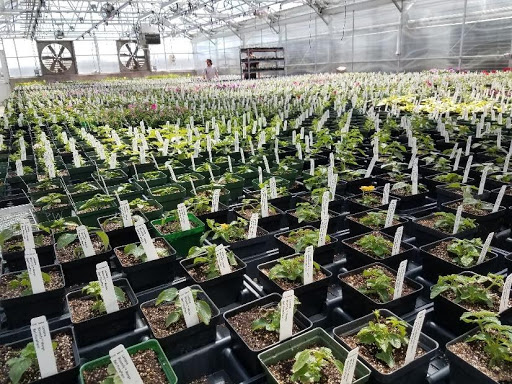
Plant growth regulators (PGRs) are applied to Geraniums and Petunias to help control stretching while they are growing in the greenhouses. The seed varieties are germinated and grown by four different cooperating greenhouses (Kiyota Greenhouse, Brown’s Greenhouse, Dutch Heritage Gardens and Welby Gardens), and are delivered to the garden in early June. The planting of the garden typically takes place from late May through the middle of June.
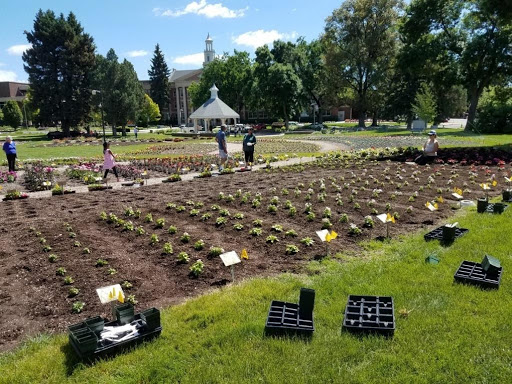
The beds in the garden are prepped each year by roto-tilling to a depth of 6-8” and broadcast spreading an all purpose granular fertilizer over each bed. The beds have been heavily amended with organic matter. For the containers, the top layer of soil is removed and replaced by new media. After planting, a slow release fertilizer is spread uniformly around both plants in the containers and plants in the ground. Plants in the garden are “ferti-irrigated” twice a week via a large fertilizer injection system connected to the irrigation lines. Ground beds are irrigated by rotary sprinklers, while containers are drip irrigated. Water is used efficiently by organizing plants into beds according to their water use requirements. Beds are rated at 0.5”, 1.0” or 1.5” of water per week. All weeding in the garden is done manually. Due to the wide diversity of plants being grown, no herbicides are used in the beds while the trial plants are growing.
All-America Selections® Partnership
The CSU Annual Flower Trial Garden is an official All-America Selections® display garden and trial ground.more
All-America Selections is an organization that promotes new garden seed varieties that have been judged in impartial trials throughout North America and show superior garden performance.
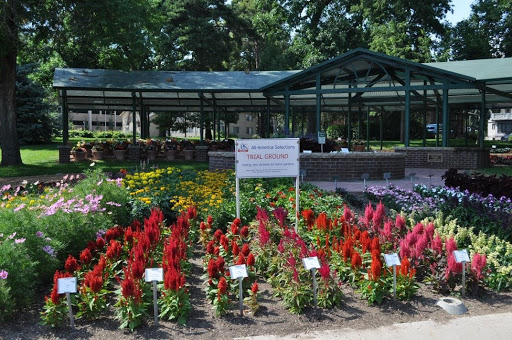
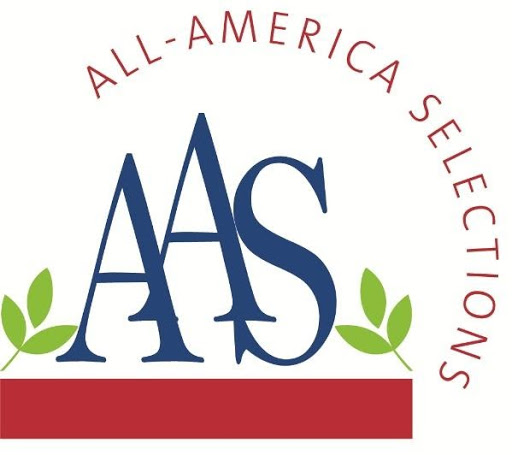
The Staff
The trial program at the Annual Flower Trial Garden is conducted under the supervision of Dr. Chad Miller, Associate Professor of Landscape Horticulture, and David Staats, Department of Horticulture Research Associate. more
A staff of 4 to 8 students is employed year round. From January through December, there is always something to be done for the trials. Each year, a student Trial Coordinator is chosen to assist in managing the trial gardens. The coordinator gains experiences throughout the entire plant trialing process, from start to finish. This involves growing plants in the greenhouse, designing and planting the garden, garden maintenance and care, research data collection and publication of the results.

Dr. Chad Miller, Assistant Professor

David Staats, Research Associate

Back Row: (left to right) – Dr. Chad Miller (Director), Sam Altaffer (Perennial Demonstration Garden), Alex Cutia (Perennial Trials Coordinator).
Front Row: (left to right) – David Staats (Research Associate), Colten Davis (Plant Select Gardens), Ben Stickland (Annual Trials Coordinator), Ashlyn Schall (Annual Trials), and Jenna Harper (Annual Trials).
Special Thanks to Volunteers
Every year, many hours of volunteer work are put in by Larimer County Master Gardeners who willingly and eagerly donate their time to the trial garden.more
Their help is essential to the immense task of transplanting thousands of plugs in the greenhouses each spring, as well as to the equally immense task of planting those thousands of plants in the garden come June. We would like to recognize and thank all of the Master Gardeners who have volunteered over the years; it is much appreciated!


